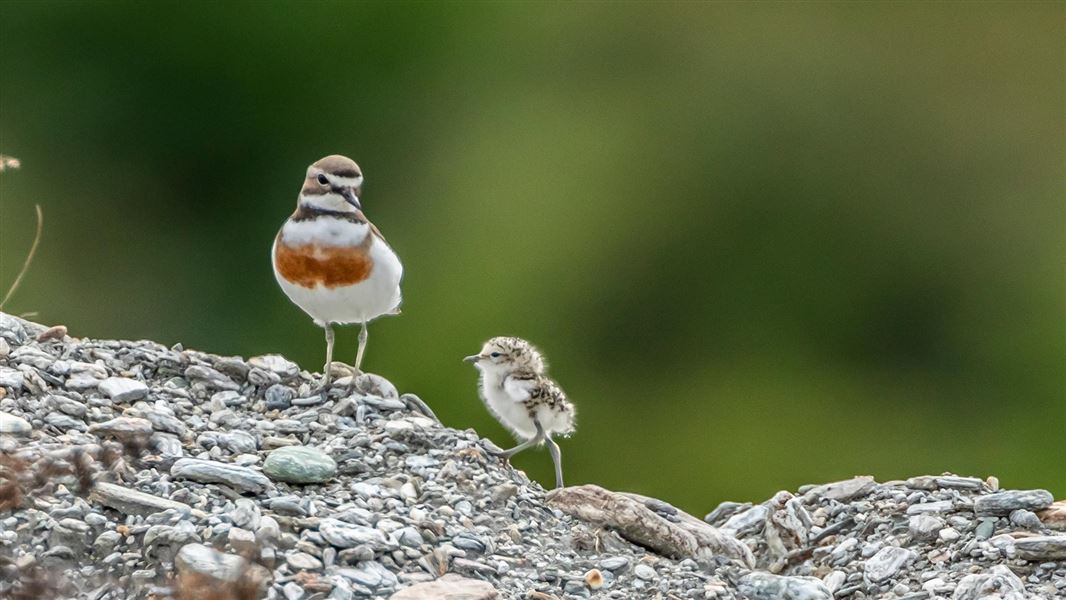Archived content: This media release was accurate on the date of publication.
Date: 19 July 2022
In Otago, examples of braided rivers include the Shotover, Rees and Dart. Native bird species such as banded dotterel/tūturiwhatu, black fronted tern/tarapirohe, wrybill/ngutu pare and black-billed gull/tarāpuka nest and raise their chicks on the gravelly areas of these braided rivers.
Camouflage is their main defence from predators and, while this ensures they remain well-hidden, it also means they are vulnerable to disturbance.
Department of Conservation (DOC) Whakatipu-wai-Māori Operations Manager David Butt says many people simply aren’t aware these special birds are nesting on the braided riverbeds.
“Like many native species, these birds evolved to defend themselves against aerial predators through camouflage,” says David. “While they’re great at blending in, they’re defenceless against introduced mammalian predators, uncontrolled dogs and vehicles.”
Braided river birds start nesting in August, with chicks hatching from mid-September until late Summer.
In the Southern Lakes area, there are groups working to increase public awareness of the birds that nest on the braided river gravel flats, such as the Friends of Tucker Beach. Each year the Friends put up signage at Tucker Beach, on the Shotover River, to let visitors know the birds are there and to remind them to keep their dogs on a lead.
“During the breeding season we ask people to follow the walking tracks through the reserve rather than walking their dogs on the gravel flats next to the river,” says Dawn Palmer, technical lead for a Jobs for Nature project doing restoration work in the Tuckers Beach Wildlife Management Reserve.
“Banded dotterels are particularly small and camouflaged, their speckled eggs and small chicks even more so,” says Dawn. “They are hard to see and there is a very real possibility that people and dogs will accidently step on chicks and eggs and disturb nesting birds.”
“Of course, we realise the area is a valued walking spot, and outside the breeding season we take the signs down so people know it’s safe to walk around without disturbing nesting birds and chicks.”
“We’re really lucky we have these birds in our area,” reiterates David. “Their national threat status ranges from declining to nationally endangered, so it’s important we take every opportunity to protect nesting sites on our braided rivers.”
The birds are also protected under the Wildlife Act, and it is an offence to harass or injure them.
Braided rivers are an iconic part of the South Island landscape and are only found in a few other places around the world, such as Alaska and the Himalayas. In Aotearoa, they’re home to a range of special birds and other plants and wildlife that have adapted to the dynamic ecosystem.
Background information
The Friends of Tucker Beach have received Jobs for Nature Funding from DOC for a habitat restoration project. They’ve engaged GSD Workforce, a subsidiary of AJ Hackett Bungy, to employ people to clear weeds and plant hardy native species in the reserve.
Banded dotterel/Pohowera – New Zealand Birds Online
Contact
For media enquiries contact:
Email: media@doc.govt.nz
